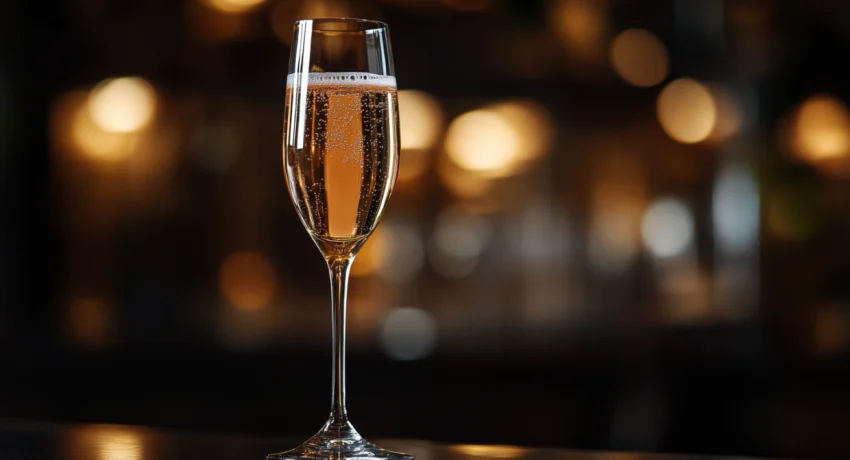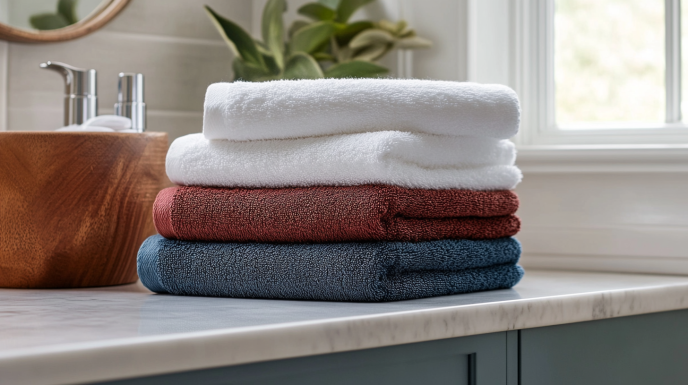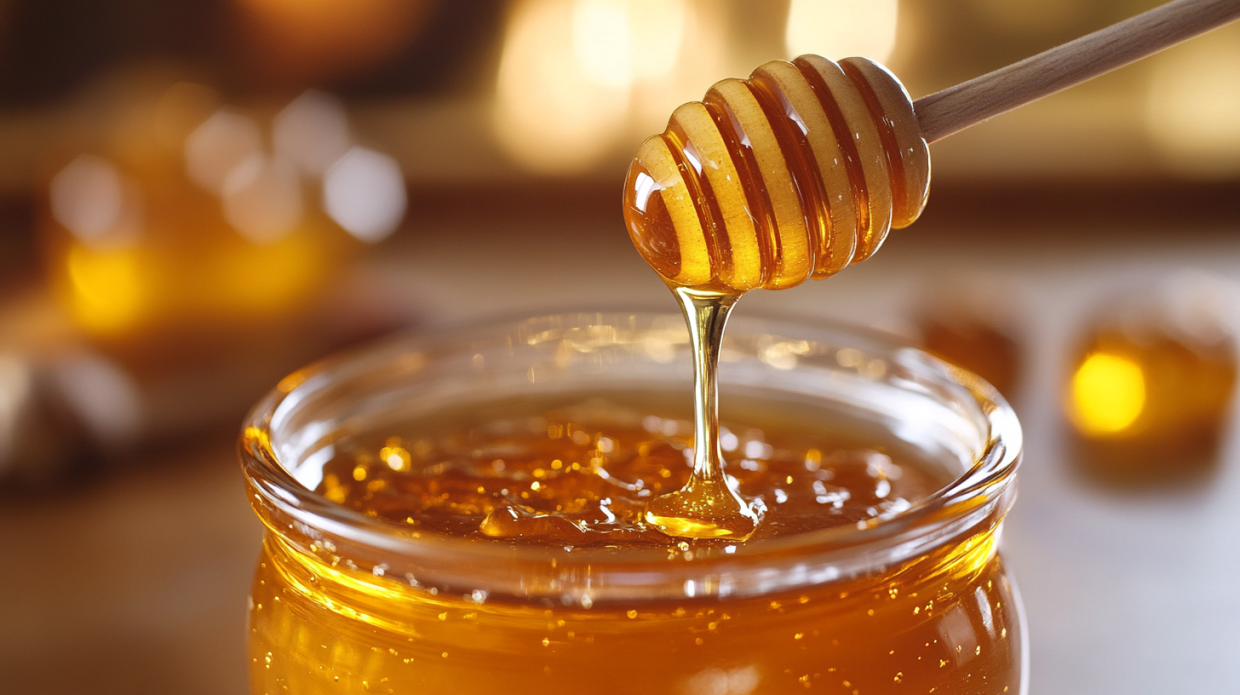
Kirkland Signature Brut Champagne, France, 750 ml
- 750 ml 12% alcohol by volume.Read more
The Hidden Gem of the Wine Aisle That’s Redefining Luxury
In the sprawling warehouse aisles of Costco, between the towering stacks of paper towels and the mountainous displays of organic quinoa, sits a quiet revolution in a sleek, elegant bottle. Kirkland Signature Champagne represents perhaps the perfect intersection of luxury and value in the modern retail landscape – a contradiction that shouldn’t work, yet somehow delivers one of the most interesting wine stories in recent memory.
As someone who has spent far too many Saturday afternoons wandering Costco’s labyrinthine layout (often emerging with items I never knew I needed), I’ve developed a particular fascination with the Kirkland Signature wine collection. But none has captured my imagination – or my palate – quite like their Champagne offering.
Let’s pop the cork on this fascinating story and discover why this warehouse club exclusive has wine enthusiasts, value seekers, and even French traditionalists talking.
The Basics: What Exactly Is Kirkland Champagne?
First things first: Kirkland Champagne is the real deal. Not sparkling wine. Not “Champagne-style” bubbly. Actual, legitimate Champagne from the Champagne region of France. This distinction matters enormously in the wine world, where the term “Champagne” is legally protected and can only be used for sparkling wines produced in this specific French region according to strict traditional methods.
The bottle proudly displays “Champagne, France” on its label, confirming its authentic provenance. Kirkland Signature Champagne is specifically a Brut Champagne, meaning it falls on the drier end of the sweetness spectrum – the style most commonly associated with the classic Champagne experience.
What makes this particularly interesting is that this authentic French luxury product bears the same Kirkland Signature label that adorns everything from toilet paper to cashews at Costco. It’s a fascinating study in brand elasticity and consumer psychology.
The Price Point That Raises Eyebrows
Perhaps the most immediately striking aspect of Kirkland Champagne is its price. While prices may vary slightly by location, Kirkland Signature Champagne typically retails for approximately $19.99 to $22.99 per bottle.
If you’re familiar with Champagne pricing, you’ll recognize this as exceptionally competitive. Most entry-level true Champagnes from recognized houses start around $40-50, with premium offerings easily climbing well above $100. Even the most budget-friendly legitimate Champagnes rarely dip below $30.
This pricing anomaly immediately raises questions. How can Costco offer authentic Champagne at such a drastically reduced price point? Is it simply the famous “Costco model” of razor-thin margins and bulk purchasing power, or is something else at play?
The Authenticity Question: Yes, It’s Really Champagne
Let’s address any lingering skepticism head-on: Kirkland Signature Champagne is indeed genuine Champagne from the Champagne region of France. It adheres to all the stringent regulations that govern Champagne production, including:
- Being produced exclusively within the legally defined Champagne region
- Using only permitted grape varieties (primarily Chardonnay, Pinot Noir, and Pinot Meunier)
- Following the traditional méthode champenoise, where secondary fermentation occurs in the bottle
- Adhering to specific aging requirements
The back label contains all the appropriate designation information required by French wine authorities, and the wine carries the proper appellation d’origine contrôlée (AOC) certification. This isn’t a case of clever marketing wordplay or loose terminology – it’s the genuine article.
The Mystery Producer: Who Makes Kirkland Champagne?
Here’s where things get intriguing. Like many Kirkland Signature products, the actual producer of their Champagne isn’t explicitly advertised. The bottle simply states it’s “Produced and bottled by Champagne GDLC in Ay, France.”
Wine sleuths and industry insiders have long speculated about the source. The prevailing theory is that Kirkland Signature Champagne is produced by Manuel Janisson, a respected Champagne house based in the village of Verzenay. Janisson is not one of the massive, globally recognized Champagne houses, but rather a well-regarded producer with a history dating back to 1921.
This arrangement follows Costco’s typical approach with their Kirkland Signature wines: partnering with established, quality producers who have excess capacity and are willing to create a private label product that doesn’t directly compete with their flagship offerings.
The actual blend is likely created specifically for Costco, though it’s produced using the same facilities, expertise, and general approach as the producer’s other Champagnes. This “white labeling” arrangement benefits both parties – the producer gains steady, high-volume business, while Costco secures an authentic product at a favorable price point.
Tasting Notes: What’s in the Glass?
What matters most, of course, is what happens when you actually pour a glass. Kirkland Signature Brut Champagne offers a tasting experience that, while perhaps not rivaling the most prestigious cuvées, delivers remarkable quality for its price point.
The wine typically presents with a pale golden color and lively, persistent bubbles – always a good sign in Champagne. On the nose, you’ll find bright citrus notes, green apple, and subtle hints of brioche and toast (the latter coming from the aging process).
On the palate, Kirkland Champagne tends toward crisp acidity with flavors of lemon, yellow apple, and mineral notes. The finish is clean and relatively straightforward, without the lingering complexity you might find in more expensive offerings. The mousse (bubble texture) is generally fine and well-integrated.
The overall profile leans toward a classic Brut style that emphasizes freshness and approachability over power or intensity. It’s a Champagne that aims to please a broad audience rather than cater to niche preferences.
The alcohol content typically sits at 12% ABV, which is standard for Champagne and contributes to its balanced character.
Value Proposition: Is Kirkland Champagne Worth It?
The question of value is where Kirkland Champagne truly shines. When evaluated purely on a quality-to-price ratio, it’s difficult to find a more compelling option in the entire Champagne category.
Is it the finest Champagne available? No, certainly not. But does it deliver an authentic Champagne experience at a fraction of what you’d typically pay? Absolutely.
The value becomes even more apparent when considering the alternatives in the same price bracket. For roughly $20, your other options would typically be:
- Prosecco or other non-Champagne sparkling wines
- Mass-produced, lower-quality sparkling wines
- Domestic sparkling wines of varying quality
None of these alternatives offer the combination of authenticity, regional specificity, and traditional production methods found in Kirkland Champagne. For many consumers, the opportunity to enjoy genuine Champagne at this price point represents an accessible luxury that would otherwise remain out of reach.
Comparative Analysis: How Does It Stack Up?
When comparing Kirkland Champagne to other options, it’s helpful to consider different price tiers:
Compared to entry-level “big house” Champagnes ($40-60):
Brands like Moët & Chandon Brut Imperial, Veuve Clicquot Yellow Label, or Nicolas Feuillatte Brut Reserve typically display more complexity, refined texture, and brand prestige. However, they come at roughly double the price. The quality gap, while noticeable to experienced palates, is not proportional to the price difference.
Compared to other budget Champagnes ($30-40):
Against options like Champagne De Saint-Gall or H. Blin, Kirkland offers comparable quality at a 30-40% discount. The primary differences are often in subtlety and complexity rather than fundamental quality.
Compared to premium Prosecco or Cava ($15-25):
At a similar price point to high-quality Prosecco or Cava, Kirkland Champagne offers a distinctly different style and the cache of authentic Champagne. While these alternatives can be excellent in their own right, they represent different stylistic traditions and flavor profiles.
The most fair comparison might be to “grower Champagnes” in the $35-45 range, where Kirkland Champagne offers similar authenticity and terroir expression at roughly half the price, albeit with somewhat less distinction and personality.
Occasion Appropriateness: When to Serve It?
Is Kirkland Champagne suitable for special occasions? This question touches on the interesting intersection of quality, perception, and social signaling that surrounds wine and luxury goods.
From a pure quality perspective, Kirkland Champagne is absolutely appropriate for celebrations and special moments. It delivers the essential Champagne experience – the pop of the cork, the lively bubbles, the traditional flavor profile – that has made this wine style synonymous with celebration.
However, the social calculus becomes more complex when brand recognition enters the equation. For hosts concerned with impression management, the Kirkland label may not carry the same prestige as recognized Champagne houses. This consideration, while perhaps superficial, is nonetheless real in many social contexts.
My suggestion? Kirkland Champagne works beautifully for:
- Casual gatherings with friends who appreciate good value
- Larger celebrations where quantity matters
- Personal celebrations where the experience matters more than the label
- Everyday luxury moments – the “Tuesday night Champagne” that would be financially impractical with pricier options
For ultra-formal occasions or when gifting to status-conscious recipients, a more recognized label might be preferred. But for most celebrations, Kirkland Champagne represents a savvy choice that allows for generosity without compromise.
Food Pairing Possibilities
Like most brut Champagnes, Kirkland Signature Champagne is remarkably food-friendly. Its crisp acidity, effervescence, and relatively neutral flavor profile make it versatile enough to complement a wide range of dishes.
Classic pairings that work particularly well include:
- Oysters and other fresh shellfish
- Fried appetizers (the acidity and bubbles cut through richness beautifully)
- Sushi and sashimi
- Mild cheeses, particularly triple-cream varieties
- Light poultry dishes
- Egg-based dishes (brunch, anyone?)
The wine’s moderate intensity means it won’t overpower delicate flavors, while its acidity helps it stand up to richer foods. It makes an excellent aperitif as well, stimulating the appetite before a meal.
For everyday enjoyment, I’ve found it pairs remarkably well with simple potato chips – the combination of salt, fat, and crisp effervescence creates an unexpectedly perfect snack moment.
Technical Details: The Fine Print
For those interested in the specifics, here are some technical details about Kirkland Signature Champagne:
- Bottle Size: Standard 750ml
- Style: Brut (dry)
- Alcohol Content: 12% ABV
- Carbonation Level: High, with fine, persistent bubbles (as expected of traditional Champagne)
- Composition: Likely a traditional blend of Chardonnay, Pinot Noir, and Pinot Meunier, though the exact percentages aren’t disclosed
- Aging: Meets the minimum Champagne aging requirements of 15 months
- Dosage: Low to moderate, in keeping with the Brut classification
The wine is vegan-friendly, as most modern Champagnes have moved away from traditional animal-derived fining agents like egg whites or isinglass.
Versatility: Beyond the Flute
While purists might insist on enjoying Champagne on its own, Kirkland Champagne’s affordable price point makes it a practical option for mixed drinks as well. Its authentic Champagne character elevates classic cocktails like:
- Mimosas (the traditional blend with orange juice)
- French 75 (with gin, lemon juice, and simple syrup)
- Kir Royale (with crème de cassis)
- Champagne cocktails (with bitters and sugar)
The value proposition becomes even more compelling when using it as a mixer – you can create authentic Champagne cocktails without the guilt of “wasting” a premium bottle. For Sunday brunch mimosas, the difference between using proper Champagne versus Prosecco or cheaper sparkling wine is noticeable and appreciated.
Availability: The Costco Connection
As a Kirkland Signature product, this Champagne is exclusively available at Costco warehouse locations. Unlike some other Kirkland wines that occasionally appear in non-Costco retail settings, the Champagne remains a warehouse exclusive.
This limited distribution creates some practical considerations:
- You’ll need a Costco membership to purchase it (though in some states, alcohol can be purchased without membership due to liquor laws)
- Availability may vary by location and season
- It’s not available for online purchase or delivery through Costco’s website
The Champagne tends to be particularly well-stocked during the holiday season (November through December), when demand peaks. During other times of year, availability can be more sporadic.
This exclusivity creates an interesting dynamic – the Champagne becomes something of an “insider secret” among Costco members, a hidden gem known primarily to those who frequent the warehouse club.
Longevity: Aging and Storage
While Kirkland Champagne is produced to be enjoyed relatively young, it does have some aging potential. Properly stored (in a cool, dark place, ideally on its side), unopened bottles can easily maintain quality for 3-4 years from purchase.
This makes it practical to stock up when you find it available, creating a modest reserve for future occasions. However, unlike premium Champagnes specifically designed for extended aging, Kirkland Champagne won’t typically develop significant additional complexity beyond this timeframe.
Once opened, the wine follows the standard timeline for Champagne – it will maintain its bubbles and freshness for approximately 1-3 days if properly sealed with a Champagne stopper and refrigerated.
Presentation: The Label and Packaging
The presentation of Kirkland Champagne reflects the broader Kirkland Signature aesthetic – clean, understated, and focused on substance over flash. The bottle is a standard Champagne shape with a simple label featuring the Kirkland Signature logo, basic information, and traditional Champagne designation details.
The packaging doesn’t attempt to mimic the elaborate styling of prestigious Champagne houses, instead embracing a more straightforward approach consistent with Costco’s brand identity. There’s something refreshingly honest about this presentation – it doesn’t pretend to be something it’s not.
Gift packaging is not typically available, though during holiday seasons, some Costco locations offer generic wine gift bags that can accommodate the bottle. For gift-giving, you might need to supply your own presentation materials.
The Champagne vs. Prosecco Question
Given its price point, Kirkland Champagne inevitably invites comparison to popular alternatives like Prosecco. While both are sparkling wines, they represent distinctly different traditions and styles:
Production Method: Champagne undergoes secondary fermentation in the bottle (méthode champenoise), while Prosecco typically uses the tank method (Charmat process). This difference significantly affects texture and flavor development.
Grape Varieties: Champagne primarily uses Chardonnay, Pinot Noir, and Pinot Meunier, while Prosecco is made from the Glera grape.
Flavor Profile: Champagne tends toward higher acidity, more yeast-derived complexity, and finer bubbles. Prosecco typically features more pronounced fruit notes, softer acidity, and larger bubbles.
Regional Specificity: Champagne must come from the Champagne region of France, while Prosecco hails from specific regions in northeastern Italy.
These differences mean that while good Prosecco can be delightful, it offers a fundamentally different experience than Champagne. Kirkland Champagne provides access to the authentic Champagne experience at a price point where consumers would typically be limited to alternatives like Prosecco.
Critical Reception: What Do the Experts Say?
Professional wine critics have generally responded positively to Kirkland Champagne, particularly when framing their assessment in terms of value. While it rarely receives the effusive praise reserved for boutique grower Champagnes or prestigious vintage releases, it’s frequently cited as an exceptional value.
Consumer reviews tend to be even more enthusiastic, with the Champagne earning strong ratings on wine apps and community forums. The common theme in these reviews emphasizes the quality-to-price ratio rather than absolute quality – phrases like “punches above its weight” and “best value in Champagne” appear frequently.
This disparity between critical and consumer reception highlights an interesting dynamic in wine evaluation. Critics, who taste professionally across wide price ranges, may judge against an absolute standard. Consumers, who purchase with their own money and have practical budget constraints, often place greater emphasis on value.
The Business Strategy Behind the Bottle
The existence of Kirkland Champagne reveals much about Costco’s sophisticated approach to private label products. Rather than simply creating a “cheap alternative,” Costco has positioned Kirkland Signature as a brand that can credibly span from everyday basics to genuine luxury goods.
This strategy relies on several key elements:
- Authentic sourcing: Partnering with legitimate producers rather than seeking shortcuts
- Quality standards: Maintaining consistent quality that meets or exceeds category expectations
- Value emphasis: Providing demonstrable value advantage over comparable products
- Transparent presentation: Not obscuring the nature of the product or making inflated claims
In many ways, Kirkland Champagne exemplifies Costco’s broader approach to private label products – finding ways to deliver legitimate quality at disruptive price points by rethinking traditional industry structures and margins.
The Cultural Significance: Democratizing Luxury
Beyond its merits as a specific product, Kirkland Champagne represents something larger – the ongoing democratization of luxury experiences. In a market where authentic Champagne has historically been the province of the affluent, Kirkland Signature has created accessibility without compromising authenticity.
This trend extends beyond wine to many categories where traditional luxury markers are becoming available to broader audiences through innovative business models and changing consumer priorities. We increasingly value the authentic experience over the prestigious label – substance over signaling.
Kirkland Signature Champagne represents perhaps the perfect intersection of luxury and value in the modern retail landscape – a contradiction that shouldn’t work, yet somehow delivers one of the most interesting wine stories in recent memory.
The Final Verdict: Is Kirkland Champagne Worth Your Attention?
After exploring Kirkland Champagne from every angle, the conclusion seems clear: this is a product that deserves a place in any value-conscious wine lover’s repertoire.
Is it the finest Champagne available? No. Will it replace prestigious labels for the most special occasions? Probably not. But does it deliver an authentic Champagne experience at a revolutionary price point? Absolutely.
For everyday celebrations, casual gatherings, or simply elevating an ordinary evening, Kirkland Champagne offers access to one of wine’s most storied traditions without the traditional price barrier. It represents a democratization of luxury that aligns perfectly with contemporary consumer values – authenticity, value, and accessibility over pretense and exclusivity.
So the next time you find yourself pushing an oversized cart through Costco’s cavernous aisles, consider adding a bottle of their Kirkland Signature Champagne to your haul. It may just change how you think about both Champagne and the humble Kirkland Signature brand.
After all, in a world of inflated luxury pricing and style-over-substance marketing, finding genuine quality at an honest price might be the most sophisticated move of all. And that calls for a toast – preferably with a glass of Kirkland Champagne in hand.




